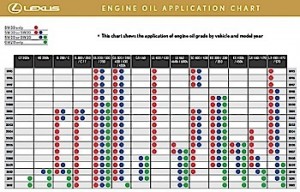

APU oil recommendations vary depending on the manufacturer, says Chevron’s Jim Gambill. Yet if you don’t pour the proper oil, your APU may not work when you need it most. Increasing usage of auxiliary power units is reducing idling and fuel consumption.
#Oil viscosity chart in fahrenheit plus
That tells you a couple things: There’s a 37-degree cold cranking advantage (from minus 22 to plus 15) to a 5W40 and the same benefit on the high end.” “Its starting temperature range is down to minus 22 F (compared with 15-plus with 15W40) up to 122 degrees F (same as 15W40). “Diesel has the widest performance range with 5W40,” says Mark Betner of Citgo. “W” commonly refers to winter, meaning the oil has been tested at cold temperatures. Ratings are determined by the Society of Automotive Engineers. The lower the number, the lower the relative ambient temperature at which the oil could quickly flow and provide cold cranking power. The first number, such as the 15 in 15W40, identifies the cold starting viscosity, or resistance to flow or speed of flow. They are old technology and don’t come close to meeting standards for durability or wear protection for modern engines, and they aren’t going to pump as well at low temperatures. SHELL: You don’t want to use straight grade engine oils, such as straight 30 or straight 40. The more you crank the engine, the more you’re going to shorten the starter life, and pulling a battery below 80 percent of its capacity, you’ll shorten battery life.ĬHEVRON: A 10-grade will give you a quicker cold start than 15-grade. What is the best solution for cold starts?ĬITGO: If an oil doesn’t flow well below 15 degrees, you’re going to increase wear, put more stress on the starter and more stress on the batteries. That’s good news for operators considering a lower viscosity oil. A premium product should be able to deliver wear levels and oil drains that operators have come to expect from the leading 15W40 oils. Thinner oil is prone to result in lower oil pressure.ĬHEVRON: In testing our 10W30, we found that an improved fuel economy of 1.3 percent in over-the-road trucks (versus 15W40) didn’t come at the expense of engine durability. In older engines (pre-2007 and especially much older models), we have heard of issues with weak oil pressure. The additive packages are highly specialized to protect the engine because the oil film is thinner. Lower viscosity oils need to be more robust to compensate for the thinner oil. Thinner oils offer less resistance to the moving parts in the engine, which turns more easily and operates more efficiently. It’s proven that durability is equivalent to 15W40 and you can get improvement in fuel economy.ĬASTROL: A 10W30 is thinner at both ends of the temperature spectrum. In the long term, I think we’ll be seeing more lighter viscosity grades. It doesn’t sound like a bunch, but with fuel at $3 a gallon and driving 120,000 miles a year, that could mean $750 to $1,000 savings. In a medium-duty test we ran, we demonstrated you could get 1.6 percent less fuel consumed when using a 10W30 than with 15W40. SHELL: You get better fuel efficiency over what you get with 15W40.

If running short-haul, say in the Dakotas, you might want to switch to 10W30 year-round. The oils are very well formulated and flow at very low temperatures. Even without a block heater, our recommendation is to stay with 15W40. With the 5-weight, you could get that real low temperature performance in cold weather, and with the 40-weight, you have high-temperature film thickness you need when you’re in 100-plus-degree temperatures.ĬHEVRON: If you’re an over-the-road trucker, you can feel very comfortable that a mineral 15W40 oil is the right viscosity – if you’ve got other things such as an engine block heater. If running extreme temperatures year-round, you could select a synthetic 5W40. It may mean going to a 10W30, 10W40 or 5W40. SHELL: When it’s getting down to zero degrees in Minnesota in the winter, the 15W40 is not going to be acceptable. We do have some customers who buy our 5W-30 because of the cold start performance. What viscosity works best in extreme temperatures?ĬASTROL: Except in very cold climates, 15W40s do well from the Mojave Desert to northern Minnesota.


 0 kommentar(er)
0 kommentar(er)
